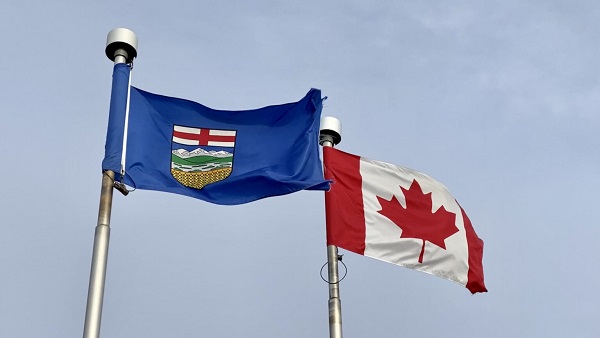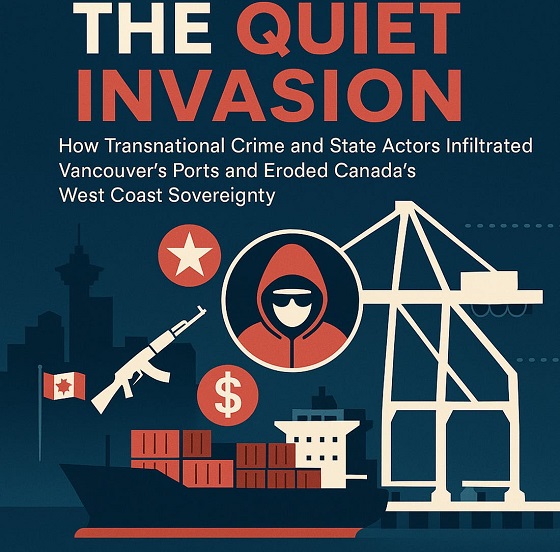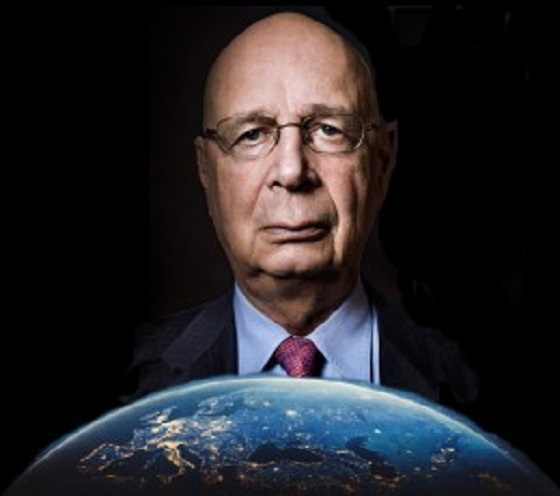Business
Median wages and salaries lower in every Canadian province than in every U.S. state

From the Fraser Institute
There’s a growing consensus among economists that the federal government and several provincial governments over the past decade have not enacted enough policies that encourage economic growth. Consequently, Canadians are getting poorer relative to residents of other countries including the United States. In particular, their ability to purchase essential goods and services such as housing and food—in other words, their standard of living—is declining relative to our neighbours to the south.
In fact, according to our new study, among the 10 provinces and 50 U.S. states, median employment earnings—that is, wages and salaries— in 2022 (the latest year of available data) were lowest in the four Atlantic provinces, followed by Manitoba, Saskatchewan, Quebec, Ontario, British Columbia and Alberta. So, the median employment earnings of workers were lower in every Canadian province than in every U.S. state.
Were Canadian provinces always in the basement? Pretty much. In 2010, while only 12 U.S. states reported higher median employment earnings than Alberta, the other nine Canadian provinces ranked among the bottom 10 places. However, the important point is that from 2010 to 2022, Canadian provinces have fallen even further behind as many low-ranking U.S. states substantially improved.
In 2010, the per-worker earnings gap (in 2017 Canadian dollars) between Louisiana, a middle-ranking state, and the nine lowest-ranked Canadian provinces varied from $4,650 (in Saskatchewan) to $15,661 (Prince Edward Island). By 2022, a typical mid-ranking state such as Tennessee was out-earning all provinces by a range of $6,770 (in Alberta) to $16,955 (P.E.I.). In other words, by 2022, not only were workers in all U.S. states out-earning workers in all Canadian provinces, the gap had grown.
Another example—Alberta and Texas are the two largest oil-producing jurisdictions in their respective countries, yet Albertans, who out-earned Texans in 2010, saw their lead of $3,423 per worker become a deficit of $5,254 by 2022.
It’s a similar story for B.C. and Washington, which are geographically proximate and have similar-sized populations. While B.C. experienced strong growth in median employment earnings per worker over this period, it still lost ground relative to Washington—the gap grew from $10,879 in 2010 to $11,311 by 2022.
The change between Ontario and Michigan is even more striking. Again, they are geographic neighbours, have similar-sized populations and share a large auto sector, with Michigan’s lead over Ontario growing from $2,955 per worker in 2010 to $8,661 by 2022. The trends are similar when comparing Saskatchewan to North Dakota or the Atlantic provinces to the New England states; the gaps have only grown larger.
So, why should Canadians care?
Of course, everybody wants to make more money, so Canadians should want to know why workers in Mississippi and Louisiana make more than workers here at home. But there’s also a broader problem—people and capital can move relatively freely across the Canada-U.S. border, meaning this growing divergence in employment earnings has significant ramifications for the Canadian economy.
It could spur the ongoing migration of highly productive individuals, including high-skilled immigrants, who choose to move south. And encourage domestic and foreign firms to invest in the U.S. rather than in Canada. If these trends continue, they will exacerbate the earnings gaps between the two countries and potentially make Canada an economic backwater relative to the U.S. There’s also a significant risk these trends could worsen if the next U.S. administration increases tariffs on Canadian exports to the U.S., effectively abrogating the North American free trade agreement.
Clearly, to mitigate this risk and reverse the ongoing divergence in employment earnings—which largely determine living standards—between Canada and the U.S., the federal and provincial governments should implement bold and sweeping growth-oriented policies to make the Canadian economy more competitive. When Canada is more attractive to business investment, high-skilled workers and entrepreneurs, all workers will reap the rewards.
Authors:
Business
RFK Jr. says Hep B vaccine is linked to 1,135% higher autism rate

From LifeSiteNews
By Matt Lamb
They got rid of all the older children essentially and just had younger children who were too young to be diagnosed and they stratified that, stratified the data
The Centers for Disease Control and Prevention (CDC) found newborn babies who received the Hepatitis B vaccine had 1,135-percent higher autism rates than those who did not or received it later in life, Robert F. Kennedy Jr. told Tucker Carlson recently. However, the CDC practiced “trickery” in its studies on autism so as not to implicate vaccines, Kennedy said.
RFK Jr., who is the current Secretary of Health and Human Services, said the CDC buried the results by manipulating the data. Kennedy has pledged to find the causes of autism, with a particular focus on the role vaccines may play in the rise in rates in the past decades.
The Hepatitis B shot is required by nearly every state in the U.S. for children to attend school, day care, or both. The CDC recommends the jab for all babies at birth, regardless of whether their mother has Hep B, which is easily diagnosable and commonly spread through sexual activity, piercings, and tattoos.
“They kept the study secret and then they manipulated it through five different iterations to try to bury the link and we know how they did it – they got rid of all the older children essentially and just had younger children who were too young to be diagnosed and they stratified that, stratified the data,” Kennedy told Carlson for an episode of the commentator’s podcast. “And they did a lot of other tricks and all of those studies were the subject of those kind of that kind of trickery.”
But now, Kennedy said, the CDC will be conducting real and honest scientific research that follows the highest standards of evidence.
“We’re going to do real science,” Kennedy said. “We’re going to make the databases public for the first time.”
He said the CDC will be compiling records from variety of sources to allow researchers to do better studies on vaccines.
“We’re going to make this data available for independent scientists so everybody can look at it,” the HHS secretary said.
— Matt Lamb (@MattLamb22) July 1, 2025
Health and Human Services also said it has put out grant requests for scientists who want to study the issue further.
Kennedy reiterated that by September there will be some initial insights and further information will come within the next six months.
Carlson asked if the answers would “differ from status quo kind of thinking.”
“I think they will,” Kennedy said. He continued on to say that people “need to stop trusting the experts.”
“We were told at the beginning of COVID ‘don’t look at any data yourself, don’t do any investigation yourself, just trust the experts,”‘ he said.
In a democracy, Kennedy said, we have the “obligation” to “do our own research.”
“That’s the way it should be done,” Kennedy said.
He also reiterated that HHS will return to “gold standard science” and publish the results so everyone can review them.
Business
Elon Musk slams Trump’s ‘Big Beautiful Bill,’ calls for new political party

From LifeSiteNews
By Robert Jones
The Tesla CEO warned that Trump’s $5 trillion plan erases DOGE’s cost-cutting gains, while threatening to unseat lawmakers who vote for it.
Elon Musk has reignited his feud with President Donald Trump by denouncing his “Big Beautiful Bill” in a string of social media posts, warning that it would add $5 trillion to the national debt.
“I’m sorry, but I just can’t stand it anymore. This massive, outrageous, pork-filled Congressional spending bill is a disgusting abomination. Shame on those who voted for it: you know you did wrong. You know it,” Musk exclaimed in an X post last month.
I’m sorry, but I just can’t stand it anymore.
This massive, outrageous, pork-filled Congressional spending bill is a disgusting abomination.
Shame on those who voted for it: you know you did wrong. You know it.
— Elon Musk (@elonmusk) June 3, 2025
Musk renewed his criticism Monday after weeks of public silence, shaming lawmakers who support it while vowing to unseat Republicans who vote for it.
“They’ll lose their primary next year if it is the last thing I do on this Earth,” he posted on X, while adding that they “should hang their heads in shame.”
Every member of Congress who campaigned on reducing government spending and then immediately voted for the biggest debt increase in history should hang their head in shame!
And they will lose their primary next year if it is the last thing I do on this Earth.
— Elon Musk (@elonmusk) June 30, 2025
The Tesla and SpaceX CEO also threatened to publish images branding those lawmakers as “liars.”
Trump responded on Truth Social by accusing Musk of hypocrisy. “He may get more subsidy than any human being in history,” the president wrote. “Without subsidies, Elon would probably have to close up shop and head back home to South Africa… BIG MONEY TO BE SAVED!!!”
( @realDonaldTrump – Truth Social Post )
( Donald J. Trump – Jul 01, 2025, 12:44 AM ET )Elon Musk knew, long before he so strongly Endorsed me for President, that I was strongly against the EV Mandate. It is ridiculous, and was always a major part of my campaign. Electric cars… pic.twitter.com/VPadoTBoEt
— Donald J. Trump 🇺🇸 TRUTH POSTS (@TruthTrumpPosts) July 1, 2025
Musk responded by saying that even subsidies to his own companies should be cut.
Before and after the 2024 presidential election, Musk spoke out about government subsidies, including ones for electric vehicles, stating that Tesla would benefit if they were eliminated.
This latest exchange marks a new escalation in the long-running and often unpredictable relationship between the two figures. Musk contributed more than $250 million to Trump’s reelection campaign and was later appointed to lead the Department of Government Efficiency (DOGE), which oversaw the termination of more than 120,000 federal employees.
Musk has argued that Trump’s new bill wipes out DOGE’s savings and reveals a deeper structural problem. “We live in a one-party country – the PORKY PIG PARTY!!” he wrote, arguing that the legislation should be knows as the “DEBT SLAVERY bill” before calling for a new political party “that actually cares about the people.”
It is obvious with the insane spending of this bill, which increases the debt ceiling by a record FIVE TRILLION DOLLARS that we live in a one-party country – the PORKY PIG PARTY!!
Time for a new political party that actually cares about the people.
— Elon Musk (@elonmusk) June 30, 2025
In June, Musk deleted several inflammatory posts about the president, including one claiming that Trump was implicated in the Jeffrey Epstein files. He later acknowledged some of his comments “went too far.” Trump, in response, said the apology was “very nice.”
With the bill still under Senate review, the dispute underscores growing pressure on Trump from fiscal hardliners and tech-aligned conservatives – some of whom helped deliver his return to power. Cracks in the coalition may spell longer term problems for the Make America Great Again movement.
-

 Business9 hours ago
Business9 hours agoRFK Jr. says Hep B vaccine is linked to 1,135% higher autism rate
-

 Alberta2 days ago
Alberta2 days agoAlberta Independence Seekers Take First Step: Citizen Initiative Application Approved, Notice of Initiative Petition Issued
-

 Crime22 hours ago
Crime22 hours agoNational Health Care Fraud Takedown Results in 324 Defendants Charged in Connection with Over $14.6 Billion in Alleged Fraud
-

 Crime2 days ago
Crime2 days agoSuspected ambush leaves two firefighters dead in Idaho
-

 Alberta1 day ago
Alberta1 day agoWhy the West’s separatists could be just as big a threat as Quebec’s
-

 Health22 hours ago
Health22 hours agoRFK Jr. Unloads Disturbing Vaccine Secrets on Tucker—And Surprises Everyone on Trump
-

 Business2 days ago
Business2 days agoCanada Caves: Carney ditches digital services tax after criticism from Trump
-

 Business2 days ago
Business2 days agoMassive government child-care plan wreaking havoc across Ontario




